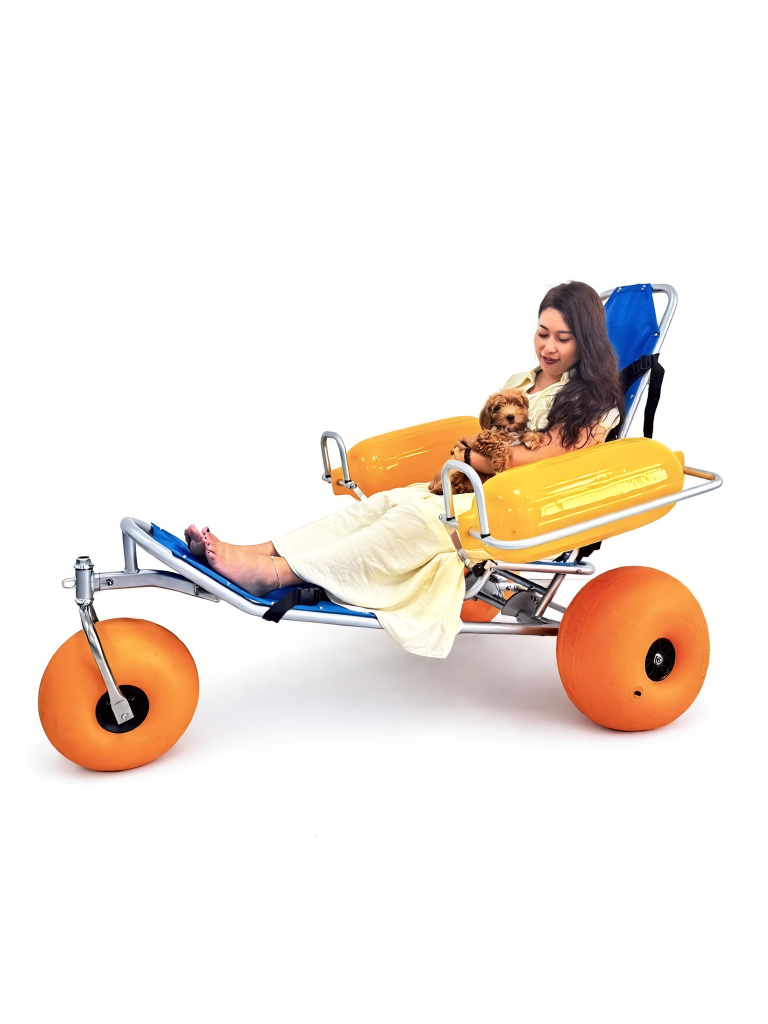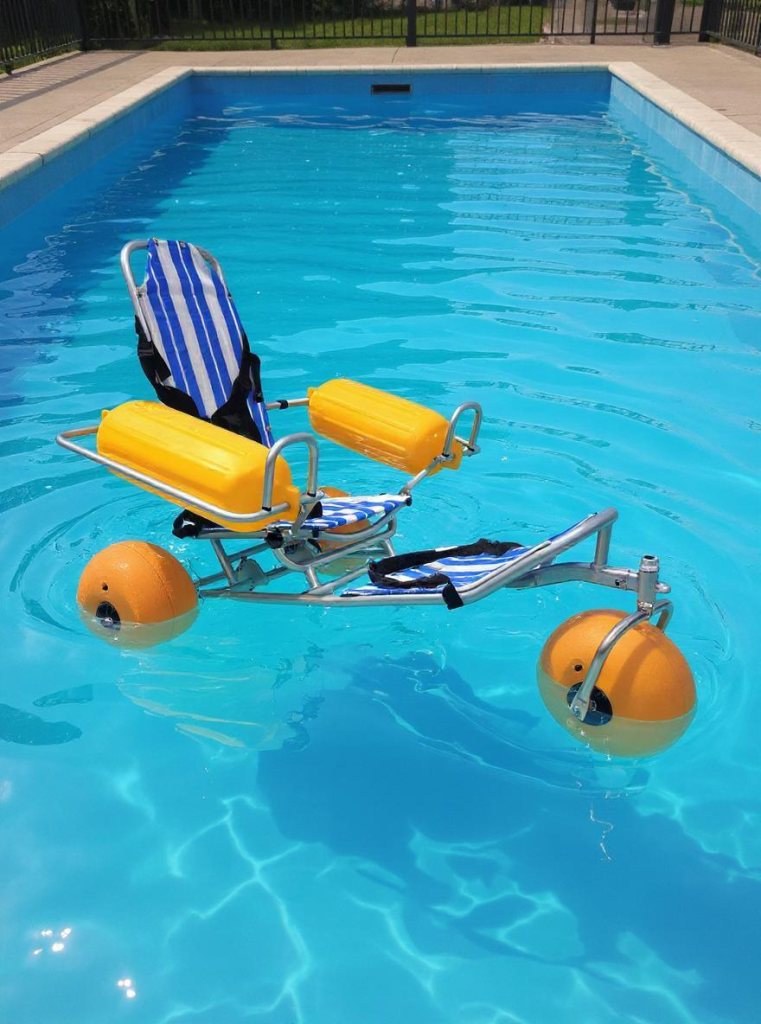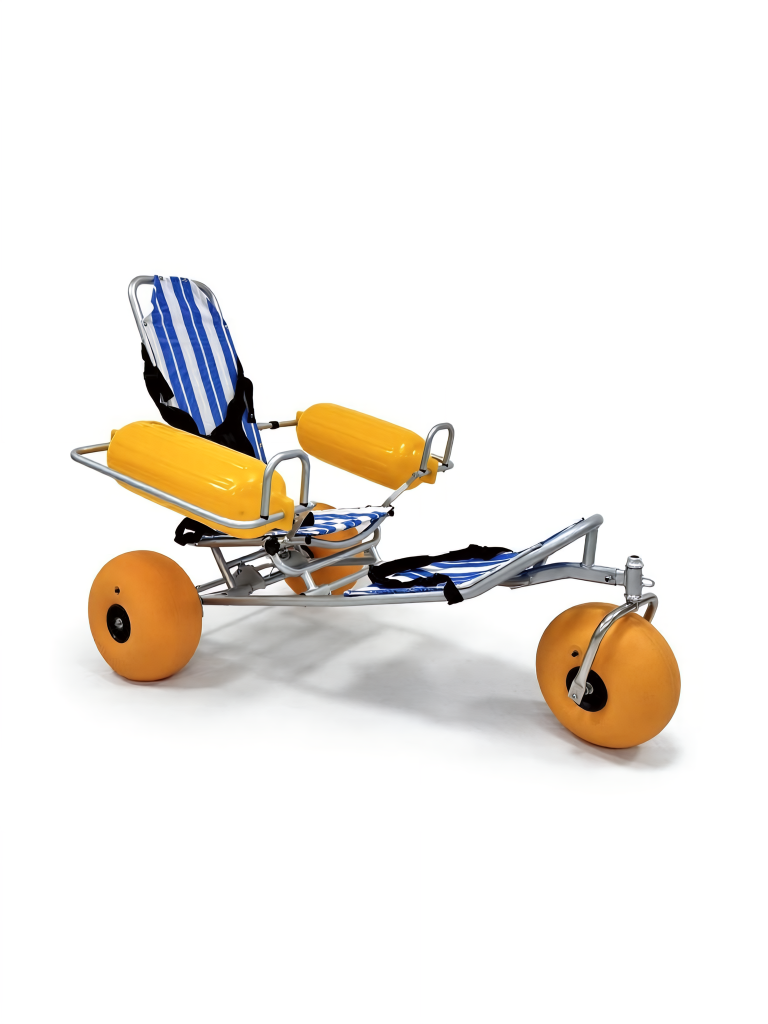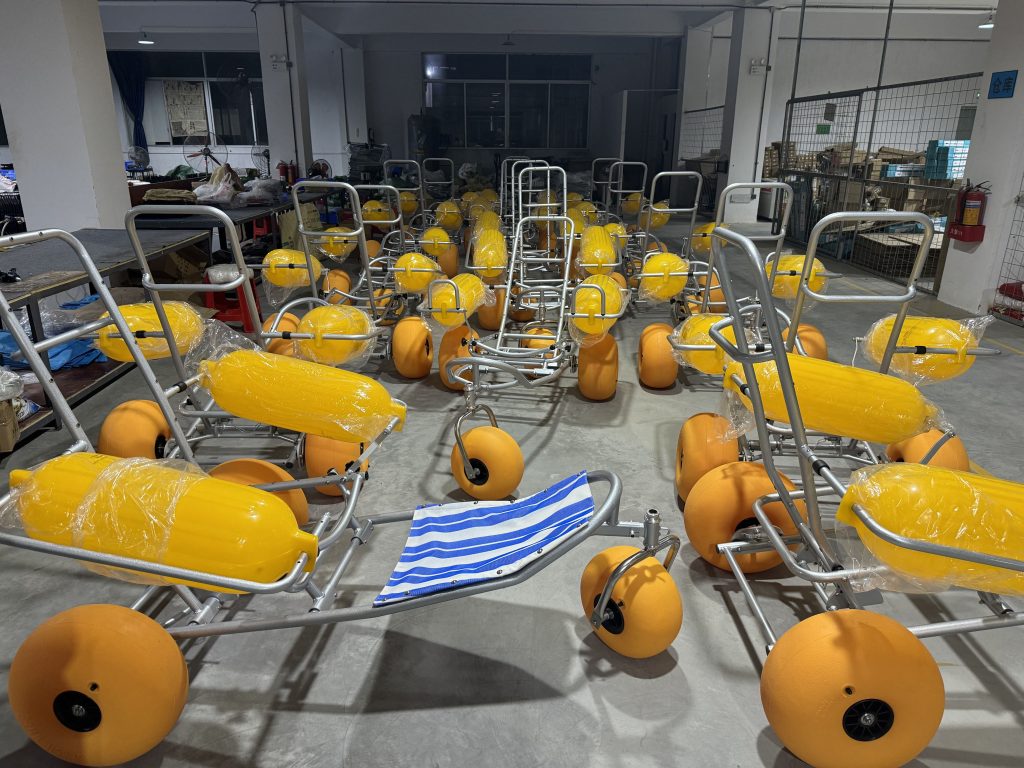Imagine the boundless expanse of the ocean, the serene tranquility of a lake, or the invigorating splash of a pool – now, imagine experiencing it all without limitation. For too long, the unique challenges of sandy shores and aquatic environments have presented formidable impediments, often relegating individuals with mobility considerations to the periphery of water-based recreation. But what if a singular, ingenious innovation could dissolve these barriers, offering not just access, but an unbridled sense of liberation? Welcome to the definitive Floating Beach Wheelchair Guide, your compass to mobility freedom on sand and water. This isn’t merely about traversing the shoreline; it’s about a seamless, confident immersion into the aquatic realm, transforming every ripple into an invitation and every sun-drenched beach into a realm of unadulterated joy. Prepare to navigate the currents of accessibility, discovering how these remarkable devices are revolutionizing inclusive leisure, ensuring that the therapeutic embrace of water is a universal privilege, not a distant aspiration.

Understanding the Floating Beach Wheelchair: A Revolution in Mobility
The floating beach wheelchair represents a true revolution in mobility, fundamentally reshaping how individuals with mobility challenges interact with aquatic environments. At its core, it’s a specialized mobility solution meticulously engineered to provide access to places where traditional wheelchairs simply cannot go: soft sand and water. Unlike conventional wheelchairs, which are designed for firm, even surfaces, these innovative devices are built from the ground up to overcome the unique obstacles presented by beaches, lakes, and pools. They are, in essence, amphibious rolling beach chairs, capable of transitioning seamlessly from land to liquid. This dual functionality is what sets them apart, offering a level of mobility freedom that was once unimaginable. The concept is simple yet profound: create a chair that not only navigates challenging terrains like sand but also floats, allowing users to enter and enjoy the water safely and confidently. This isn’t just about getting to the water’s edge; it’s about full immersion, enabling participation in water-based activities and experiencing the therapeutic benefits of aquatic environments. The development of the floating beach wheelchair is a testament to inclusive design, driven by the desire to break down barriers and ensure that everyone, regardless of their mobility considerations, can experience the joy and liberation that comes with being in and around water. It’s a game-changer for beach access and accessible water recreation, transforming dreams of aquatic enjoyment into tangible realities. This guide will delve into every aspect of these remarkable devices, from their ingenious design to their real-world impact, empowering you to make an informed choice and embrace your newfound mobility freedom on sand and water.
Key Features and Design: Engineered for Sand and Water
The exceptional capabilities of a floating beach wheelchair are a direct result of its specialized key features and design, meticulously engineered for sand and water. Every component is chosen and crafted to ensure optimal performance, durability, and safety in challenging aquatic environments. One of the most distinctive and crucial features is the wheel design. Unlike the narrow, high-pressure tires of standard wheelchairs, floating beach wheelchairs are equipped with large, wide, low-pressure water wheels, often referred to as balloon wheels. These aren’t just for show; they serve a dual purpose: their large surface area prevents the chair from sinking into soft sand, allowing it to glide effortlessly across the beach, and they provide significant buoyancy in water, ensuring the chair floats stably. The frame of these wheelchairs is typically constructed from lightweight, corrosion-resistant materials such as marine-grade aluminum, high-density polyethylene (HDPE), or PVC. These materials are chosen for their inherent buoyancy, their ability to withstand the corrosive effects of saltwater and chlorine, and their overall durability. This robust construction ensures the chair’s longevity and reliability even with frequent exposure to harsh elements.
The seating is another critical design element. It’s usually made from a quick-drying, breathable mesh fabric that allows water to drain easily, preventing waterlogging and ensuring user comfort. This material is also resistant to mold, mildew, and UV degradation, making maintenance simpler. Many models incorporate adjustable backrests and elevating leg rests, allowing users to recline for optimal relaxation while floating or sunbathing. Safety features are paramount and are integrated into the design. These can include secure lap belts or chest harnesses to keep the user safely in place during transfers and while in the water, as well as anti-tip designs for enhanced stability. Some chairs also feature push handles for caregivers, designed for ergonomic comfort and easy maneuverability both on land and in shallow water. The overall design prioritizes ease of use for both the user and any assisting caregivers, making transfers simpler and navigation more intuitive. This thoughtful combination of materials and design elements ensures that the floating beach wheelchair is not just a mobility aid, but a comprehensive solution for mobility freedom on sand and water, offering a truly confident experience for all water lovers.

Navigating Diverse Terrains: From Shoreline to Open Water
The true testament to the versatility of a floating beach wheelchair lies in its ability to seamlessly transition and excel at navigating diverse terrains, from the challenging shoreline to the inviting open water. This adaptability is what grants users unparalleled mobility freedom on sand and water. On the sand, the large, low-pressure water wheels are a game-changer. They distribute the user’s weight over a wide surface area, preventing the chair from sinking into soft, dry sand. This allows for effortless rolling, making the journey from the parking area or boardwalk to the water’s edge a smooth and enjoyable experience. Caregivers will find pushing the chair significantly easier than a standard wheelchair, reducing physical strain and fatigue. On firmer, packed sand, the chair glides with remarkable ease, offering a comfortable ride.
Once at the water’s edge, the transition into the open water is where the floating beach wheelchair truly shines. Its inherent buoyancy, combined with the flotation provided by the large wheels, ensures that the chair floats stably and securely. This allows users to enter the ocean, lake, or pool with confidence, experiencing the sensation of weightlessness and the therapeutic embrace of the water. The design prioritizes stability in the water, often featuring a wide base and a low center of gravity to minimize the risk of tipping, even with gentle waves or movement. This robust stability is crucial for both user and caregiver peace of mind. While not designed for deep-sea adventures, these chairs enable users to float comfortably in shallow to moderate depths, allowing for participation in water activities like gentle swimming, floating, or simply enjoying the refreshing coolness of the water. The quick-drying mesh fabric ensures that the chair doesn’t become waterlogged, making the exit from the water as smooth as the entry. This seamless capability to navigate from the challenging shoreline environment to the liberating open water is what defines the mobility freedom offered by these specialized wheelchairs, making every aquatic adventure accessible and enjoyable.
Safety First: Ensuring a Secure and Confident Experience
When it comes to any mobility device, especially one used in and around water, safety first is not just a slogan; it’s a fundamental principle guiding the design and use of floating beach wheelchairs. These chairs are meticulously engineered with a range of integrated safety features to ensure a secure and confident experience for users and caregivers alike. The inherent buoyancy of the chair itself is the primary safety mechanism. Engineered to float, these chairs prevent sinking, providing a stable platform in the water. This is achieved through the strategic placement of buoyant materials and the design of the water wheels, which act as flotation devices. Beyond basic flotation, many models include secure harnessing systems, such as lap belts or chest straps, to keep the user safely in place during transfers and while in the water. This prevents accidental slippage or falling out of the chair, even with gentle waves or movement. Anti-tip designs are also a common feature, often incorporating wide bases or specialized wheel configurations that enhance stability on uneven terrain and in the water, minimizing the risk of capsizing. The materials used in construction are not only corrosion-resistant but also non-toxic and skin-friendly, preventing irritation or allergic reactions during prolonged contact with water. Furthermore, many floating beach wheelchairs are designed for easy maneuverability by a caregiver, often featuring push handles and a lightweight frame that allows for controlled movement in and out of the water. Some advanced models may even include tether points for ropes, allowing caregivers to maintain a secure connection to the chair in open water. It is always recommended that users wear a personal flotation device (PFD) as an additional layer of safety, especially if they are not strong swimmers or if the water conditions are unpredictable. Clear user manuals and safety guidelines are provided by manufacturers, emphasizing the importance of proper assembly, transfer techniques, and supervision. By combining robust engineering with thoughtful safety features, floating beach wheelchairs offer not just access to water, but genuine peace of mind, allowing everyone to enjoy the aquatic environment with confidence and security, truly ensuring a secure experience.

Choosing Your Ideal Floating Companion: A Detailed Buyer’s Guide
Selecting your ideal floating companion is a pivotal step towards unlocking your aquatic adventures. With various models and features available, this detailed buyer’s guide will help you make an informed decision that best suits your needs and ensures mobility freedom on sand and water. First, consider the user’s specific needs and comfort. Does the user require significant head, neck, or trunk support? Are adjustable recline positions important for comfort during extended use? Look for models that offer appropriate support and customization options. The type of water environment you’ll primarily be using the chair in is also crucial. While all floating chairs are designed for water, some might be better suited for calm lake waters, while others are more robust for gentle ocean waves. If you anticipate varied conditions, look for models with enhanced stability features.
Portability and ease of transport are key factors, especially if you plan to travel frequently. Look for models that are lightweight and feature easy disassembly or compact folding mechanisms. A chair that can be easily loaded into a car or stored away will significantly enhance your experience. The materials of construction are vital for longevity. Opt for marine-grade, corrosion-resistant materials like PVC, anodized aluminum, or stainless steel. These materials withstand saltwater, chlorine, and UV exposure, ensuring your investment lasts. Pay close attention to the wheel design. Large, low-pressure water wheels are essential for navigating soft sand and providing buoyancy in water. Some wheels are inflatable, offering adjustable firmness, while others are solid. Consider the weight capacity of the chair to ensure it can safely accommodate the user. Always check the manufacturer’s specifications to prevent overloading. Safety features such as secure harnesses, anti-tip designs, and sturdy braking mechanisms are non-negotiable. Prioritize chairs that emphasize user security and caregiver control. Finally, consider the ease of maintenance. Quick-drying fabrics, simple rinsing procedures, and readily available replacement parts will make ownership more convenient. By carefully evaluating these aspects, you can confidently choose a floating beach wheelchair that provides the optimal blend of comfort, safety, and durability, ensuring countless hours of fun mobility in the water, making it your perfect floating companion.
Maintenance and Care: Preserving Your Investment
Your floating beach wheelchair is an investment in freedom and fun, and proper maintenance and care are crucial to preserving your investment and ensuring its longevity and continued performance. The unique challenges of aquatic environments, particularly saltwater and sand, necessitate a diligent care routine. The most critical step after every single use, especially in saltwater or chlorinated pools, is a thorough rinse with fresh water. Salt and chlorine are highly corrosive and can quickly degrade materials if not removed. Use a hose to spray down the entire chair, paying close attention to all joints, axles, wheel hubs, and any crevices where sand or salt crystals might accumulate. For amphibious rolling beach chair models, ensure you rinse the wheel mechanisms thoroughly. After rinsing, allow the chair to air dry completely in a shaded area. Avoid direct sunlight for prolonged periods, as UV rays can also cause material degradation over time.
Periodically, you should perform a more detailed inspection. Check all fasteners, bolts, and screws to ensure they are tight. Inspect the frame for any signs of cracks, bends, or corrosion. Examine the fabric seat and backrest for tears or excessive wear. If your chair has inflatable wheels, check their pressure regularly and inflate as needed. Lubricate any moving parts, such as folding mechanisms or wheel bearings, with a marine-grade, water-resistant lubricant. This will prevent rust and ensure smooth operation. However, be mindful not to over-lubricate, as this can attract sand and debris. If any parts are damaged or excessively worn, replace them promptly. Many manufacturers offer replacement parts, and addressing issues early can prevent more significant problems down the line. When storing the wheelchair for extended periods, particularly during the off-season, keep it in a clean, dry, and protected environment. If the chair disassembles, storing it in its component parts can save space and protect it from accidental damage. By following these maintenance and care guidelines, you will significantly extend the life of your floating beach wheelchair, ensuring it remains a reliable and safe mobility solution for countless future aquatic adventures, guaranteeing mobility freedom on sand and water for years to come.
Real-Life Transformations: Stories of Unrestricted Aquatic Joy
The true impact of floating beach wheelchairs is best understood through the real-life transformations and inspiring stories of individuals whose lives have been profoundly changed by these remarkable devices. These testimonials go beyond mere functionality, speaking to the profound emotional and social benefits that come with newfound access to water, leading to unrestricted aquatic joy. I recently heard from a mother whose son, who uses a wheelchair, had always watched his siblings play in the ocean from a distance. With their new floating beach wheelchair, he was able to join them for the first time. She described his face lighting up with pure joy as the waves gently lifted him, a moment she said she would cherish forever. It wasn’t just about him being in the water; it was about him being with his family, sharing an experience that had previously been inaccessible. Another powerful story came from an elderly gentleman who had been an avid swimmer his entire life but had lost his mobility due to age. He thought his days of feeling the water’s embrace were over. His family surprised him with a floating beach wheelchair, and he was able to float in the lake near his home once again. He spoke of the profound sense of peace and freedom he felt, a connection to his past self that he thought was lost. These stories highlight the therapeutic benefits of water, not just physically, but emotionally. They underscore how these chairs facilitate fun mobility and create opportunities for accessible water recreation that were previously unimaginable. From individuals participating in adaptive water sports to families simply enjoying a day at the beach together, floating beach wheelchairs are truly making waves, breaking down barriers and building bridges to a more inclusive and joyful world. Each splash, each smile, and each shared moment in the water is a testament to the power of these innovative mobility solutions to bring unrestricted joy to countless lives, fostering true mobility freedom.
Conclusion: Embrace the Water, Embrace Your Freedom
The journey to truly inclusive recreation is a continuous one, and the floating beach wheelchair stands as a beacon of progress in this endeavor. These remarkable devices have fundamentally reshaped what it means to experience the beach and water for individuals with mobility challenges. We’ve explored their ingenious design, from the buoyant water wheels to the corrosion-resistant frames, all designed to provide safe beach mobility and aquatic freedom. We’ve delved into the critical safety features that offer peace of mind and the myriad of fun activities and experiences they unlock. We’ve also provided essential guidance on choosing your ideal floating companion, preparing for your water adventure, and ensuring its longevity through proper maintenance and care. Most importantly, we’ve shared real-life transformations that powerfully illustrate the profound impact these chairs have on lives, fostering independence, inclusion, and unrestricted aquatic joy. The message is clear: the beach, with its therapeutic waves and golden shores, is a place for everyone. By embracing and promoting the use of floating beach wheelchairs, we are not just providing equipment; we are fostering a culture of accessibility, empowering individuals to reclaim their freedom, and ensuring that the simple, yet profound, pleasure of a beach day is a right, not a privilege. So, whether you’re seeking therapeutic benefits, a return to beloved pastimes, or simply the chance to feel the sun on your face and the water beneath you, remember that the world of aquatic fun is now within reach. Dive in, the water’s fine, and the joy is boundless. Your safe and fun mobility solution awaits, offering true mobility freedom on sand and water!

